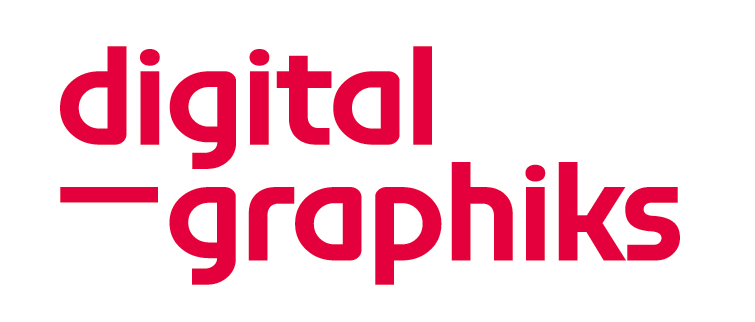Emotional intelligence (EQ) plays a pivotal role in the success of any team. It refers to the ability to understand and manage emotions—both your own and those of others. When team members possess high emotional intelligence, they are better equipped to collaborate, navigate conflicts, and create an atmosphere of trust and mutual respect. This, in turn, leads to enhanced productivity, healthier team dynamics, and better decision-making.
One fun and impactful way to build emotional intelligence in teams is through engaging activities like who’s more likely to questions. These seemingly simple prompts are a fantastic tool to not only bond teams but also to improve various components of emotional intelligence. Let’s dive into how these questions can help nurture EQ within your team.
What is Emotional Intelligence and Why Does It Matter?
Before we explore how Who’s More Likely To Questions can benefit your team, let’s first define emotional intelligence (EQ) and understand its significance in the workplace.
Key Components of Emotional Intelligence
- Self-Awareness: Recognizing and understanding your emotions and how they influence your thoughts and behavior.
- Self-Regulation: Managing your emotions in healthy ways, particularly in stressful situations.
- Empathy: Understanding the emotions of others and responding appropriately.
- Social Skills: Communicating effectively and building relationships with others.
- Motivation: Harnessing emotions to drive action and achieve personal and professional goals.
Why EQ Matters in Teams
- Collaboration: Teams with high EQ can communicate better and collaborate more effectively.
- Conflict Resolution: Emotionally intelligent teams are better at managing and resolving conflicts without escalating tensions.
- Adaptability: High EQ enables teams to handle challenges with resilience and flexibility, adjusting to changing circumstances.
How Who’s More Likely To Questions Promote Emotional Intelligence
Who’s more likely to questions are a fun and engaging way to explore team members’ personalities, behaviors, and emotional tendencies. By asking team members to guess who fits certain scenarios, these questions open doors to understanding one another better. Here’s how they contribute to developing key aspects of emotional intelligence:
1. Fostering Empathy
Empathy is a critical part of emotional intelligence. It’s about understanding and sharing the feelings of others. Who’s More Likely To Questions create the perfect opportunity to develop this skill, as team members are prompted to think about each other’s behavior, preferences, and potential responses to various situations.
- Example: If the question is, “Who’s more likely to stay calm in a stressful situation?” participants will reflect on how each person handles stress. This promotes empathy as team members realize how others might be affected by certain situations.
- Impact: As people start seeing things from different perspectives, empathy within the team deepens, leading to more supportive interactions.
2. Improving Self-Awareness
Self-awareness involves recognizing your emotions and understanding how they affect your actions. When answering who’s more likely to questions, team members often reflect on their own behaviors and reactions. This introspection helps improve self-awareness.
- Example: A question like “Who’s more likely to take the initiative on a team project?” encourages participants to evaluate their own tendencies toward leadership and responsibility.
- Impact: This self-reflection fosters a better understanding of personal strengths and areas for improvement, contributing to greater emotional intelligence.
3. Enhancing Social Skills
Social skills are crucial in emotionally intelligent teams. Effective communication and building positive relationships with colleagues is made easier when team members have strong social skills. Who’s more likely to questions encourage interaction in a relaxed, non-threatening way, allowing team members to practice social skills without the pressure of formal settings.
- Example: Asking “Who’s more likely to share a funny story during a team meeting?” invites conversation and interaction, improving communication dynamics.
- Impact: These questions not only foster communication but also enhance the team’s ability to collaborate and engage in meaningful discussions.
4. Boosting Emotional Regulation
Emotional regulation is the ability to manage emotions in a healthy way, especially in difficult situations. Light-hearted who’s more likely to questions create opportunities for emotional regulation by requiring team members to navigate their responses in a fun and sometimes challenging way.
- Example: Asking “Who’s more likely to play a harmless prank on a colleague?” encourages responses that require restraint and respect for others’ boundaries.
- Impact: Engaging in such activities allows team members to practice emotional control and develop a more balanced approach to their emotional reactions.
Benefits of Using Who’s More Likely to Questions in Team Building
Incorporating Who’s More Likely to Questions into team-building activities offers numerous benefits that extend beyond just improving emotional intelligence. Here’s how these questions can enhance team dynamics:
1. Creating a Safe Space for Vulnerability
Building trust in a team requires creating an environment where members feel comfortable being open and vulnerable. Who’s more likely to questions help establish this environment by allowing team members to share personal stories in a light-hearted and non-judgmental manner.
- Benefit: This promotes a culture of trust, where team members feel safe to express their thoughts, emotions, and ideas freely.
2. Facilitating Team Bonding
These questions are an excellent way to break down barriers and promote a sense of unity. As team members guess who might be most likely to do something fun or quirky, they discover shared traits and build stronger connections.
- Benefit: The more team members know and understand one another, the stronger their bonds become, leading to better collaboration and communication.
3. Increasing Team Engagement
Team engagement increases when people feel connected to one another. Who’s more likely to questions promote active participation, making team-building activities more enjoyable and engaging for everyone involved.
- Benefit: A more engaged team is not only productive but also motivated to support each other and work together toward common goals.
Best Practices for Using Who’s More Likely To Questions in Teams
To make the most out of these questions and truly promote emotional intelligence, follow these best practices:
1. Start with Icebreakers
Kick off meetings or team-building sessions with a few light Who’s More Likely To Questions. This helps break the ice and sets a positive, relaxed tone for the rest of the activity.
2. Keep Questions Inclusive
Ensure the questions are inclusive and neutral. Avoid questions that could potentially make someone feel uncomfortable or excluded. The goal is to promote unity, not division.
3. Foster Open Dialogue
After answering each question, open the floor for discussion. Encouraging participants to explain their reasoning behind their answers can lead to deeper insights about each team member and the overall group dynamic.
4. Mix Fun and Thoughtful Questions
While it’s important to keep the atmosphere light and fun, balance your questions with some that prompt reflection on team values, challenges, and goals. This will give your team a well-rounded emotional experience.
Conclusion
Who’s More Likely To Questions are not just a fun icebreaker or team-building activity; they’re an effective way to promote emotional intelligence within your team. From fostering empathy to boosting self-awareness and enhancing social skills, these questions create an environment where emotional intelligence can flourish. By incorporating them into your team-building activities, you can cultivate stronger, more connected, and emotionally intelligent teams that thrive in any environment.
Start integrating these fun yet meaningful questions into your next team meeting or event, and watch as your team’s emotional intelligence and collaboration improve.
Also Read
Creative Christmas Virtual Game Ideas for Holiday Parties and Team Bonding



